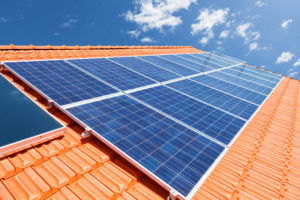Solar panels are an excellent way to harness the power of solar energy and reduce reliance on traditional electricity sources. This comprehensive guide will take you through the step-by-step process of creating your own solar panel. Following these instructions, you can build a solar panel that generates clean and renewable energy for your home or small-scale projects.
Contents
- 1 Understanding Solar Panels
- 2 Preparing for the Project
- 3 Step-by-Step Guide to Making a Solar Panel
- 4 1. Designing and Sizing the Solar Panel
- 5 2. Building the Panel Frame
- 6 3. Wiring and Connecting the Solar Cells
- 7 4. Installing the Encapsulation and Backsheet
- 8 5. Testing and Quality Assurance
- 9 Case Study: DIY Solar Panel Project for Residential Energy Savings
- 10 Expert Insights From Our Solar Panel Installers About How to Make a Solar Panel
- 11 Experience Solar Excellence with Us!
- 12 Conclusion
Understanding Solar Panels
Before diving into the DIY process, let’s first understand what a solar panel is and how it works. Solar panels convert sunlight into electrical energy through the photovoltaic effect. They consist of several solar cells, typically silicon, that generate electricity when sunlight exposes them. These solar cells are interconnected and enclosed within a protective frame.
Preparing for the Project
Before you start making your solar panel, it’s crucial to make some initial preparations:
Assessing Your Energy Needs
Determine the amount of electricity you aim to generate with your solar panel. Assess your energy consumption to understand how many solar panels you require to meet your requirements effectively.
Finding a Suitable Location
Identify a location for your solar panel installation that receives ample sunlight throughout the day. Ideally, it should be a spot with minimal shading and maximum exposure to sunlight.
Calculating the Required Number of Solar Cells
Calculate the number of solar cells needed to create your solar panel based on your energy needs and the specifications of the solar cells you have chosen.
Gathering the Necessary Tools and Materials
To successfully build a solar panel, gather the following tools and materials:
- Solar cells (with desired wattage and efficiency)
- Frame material (such as aluminum or wood)
- Soldering iron and solder
- Wire cutters and strippers
- Tabbing wire and bus wire
- Flux pen for soldering
- Backsheet material (to protect the solar cells)
- Encapsulation material (to ensure weather resistance)
- Silicone adhesive or glue
- Multimeter for testing and measuring the electrical output

Step-by-Step Guide to Making a Solar Panel
Creating your solar panel is an exciting and rewarding project. Follow this detailed step-by-step guide to build your solar panel and harness the sun’s power.
1. Designing and Sizing the Solar Panel
Choosing the Right Solar Cells
Begin by selecting high-quality solar cells that suit your desired wattage and efficiency: research different types and manufacturers to find the best fit for your project.
Determining the Layout and Dimensions
Consider the available space and determine the layout and dimensions of your solar panel. Sketch a diagram to visualize the solar cells’ arrangement and plan the panel’s overall size.
Calculating the Optimal Number of Solar Cells
Calculate the optimal number of solar cells required to achieve your desired power output based on your energy needs and the specifications of the chosen solar cells.
2. Building the Panel Frame
Selecting the Frame Material
Choose a suitable frame material that provides durability and structural integrity. Aluminum and wood are commonly used materials for solar panel frames.
Cutting and Assembling the Frame Components
Measure and cut the frame components according to the predetermined dimensions. Assemble the frame, ensuring that it is sturdy and capable of securely holding the solar cells.
Securing the Solar Cells to the Frame
Position the solar cells within the frame, ensuring proper alignment and spacing between each cell. Use adhesive or clips to secure the cells to the frame, ensuring they are firmly attached.
3. Wiring and Connecting the Solar Cells
Understanding Electrical Connections
Learn about the electrical connections within a solar panel. Familiarize yourself with series and parallel connections and determine which configuration suits your project’s voltage and current requirements.
Soldering the Solar Cells
Using a soldering iron, carefully solder the connections between the solar cells. Apply flux to ensure good electrical contact and use proper soldering techniques to create strong and reliable connections.
Insulating and Protecting the Connections
After soldering the connections, insulate them properly using electrical tape or heat shrink tubing. This step ensures the connections are protected from moisture and accidental short circuits.
4. Installing the Encapsulation and Backsheet
Applying the Encapsulation Layer
Apply a protective encapsulation layer over the solar cells. This layer safeguards the cells from moisture, dust, and other environmental factors. Choose a suitable encapsulant and follow the manufacturer’s instructions for application.
Attaching the Backsheet
Securely attach the backsheet material to the frame, ensuring that it covers the entire surface of the solar panel. The backsheet provides additional protection against weather conditions and helps maintain the panel’s structural integrity.
5. Testing and Quality Assurance
Verifying Electrical Output
Using a multimeter, test the electrical output of your solar panel. Measure the voltage and current the solar cells generate to ensure they meet your expectations. Troubleshoot any issues that may arise during testing.
Performing Quality Checks
Inspect the solar panel for any loose connections, damaged cells, or other defects. Check the frame for stability and ensure that the encapsulation and backsheet are properly applied.
Ensuring Safety Measures
Before connecting the solar panel to an electrical system, ensure all safety measures are in place. Follow local electrical codes and guidelines. If in doubt, consult a licensed electrician for assistance.
Case Study: DIY Solar Panel Project for Residential Energy Savings
Background
Solar Panels Network USA recently collaborated with a homeowner aiming to reduce their energy bills by building a DIY solar panel. This project sought to empower the homeowner with knowledge of solar energy while providing a practical solution to lower electricity costs.
Project Overview
The homeowner had a keen interest in renewable energy and wanted to build a solar panel that could supplement their home’s electricity supply. The objective was to create a reliable, efficient solar panel that could generate clean energy, contributing to both cost savings and environmental sustainability.
Implementation
Designing and Planning
We began by assessing the homeowner’s energy needs to determine the required power output of the solar panel. The homeowner’s average energy consumption was analyzed, leading to a decision on the number and type of solar cells needed. We opted for high-efficiency monocrystalline solar cells due to their superior performance.
Building the Panel Frame
The frame was constructed using durable aluminum, chosen for its lightweight and corrosion-resistant properties. The frame’s dimensions were carefully measured and cut to accommodate the calculated number of solar cells. The components were assembled securely, ensuring a sturdy foundation for the solar cells.
Wiring and Connecting the Solar Cells
The solar cells were laid out within the frame, ensuring optimal spacing and alignment. Using a soldering iron and tabbing wire, we connected the cells in series to achieve the desired voltage. Flux was applied to ensure strong, reliable solder joints. The connections were insulated with heat shrink tubing to protect against moisture and prevent short circuits.
Installing the Encapsulation and Backsheet
An encapsulation layer was applied over the solar cells to shield them from environmental elements like dust and moisture. This layer was followed by a durable backsheet attached to the frame, providing additional protection and structural support.
Testing and Quality Assurance
The assembled panel was tested using a multimeter to measure its voltage and current output. These tests confirmed that the panel was functioning as expected, producing the required electrical output. A thorough inspection ensured there were no loose connections or defects.
Results
The DIY solar panel successfully generated electricity, meeting the homeowner’s supplemental energy needs. The project not only reduced their electricity bills but also increased their understanding and appreciation of renewable energy technologies. The homeowner reported a sense of accomplishment and a renewed commitment to sustainable living.
Summary
This case study highlights the effectiveness of building a DIY solar panel for residential use. Through careful design, precise assembly, and thorough testing, Solar Panels Network USA helped a homeowner create a functional and efficient solar panel. This project underscored the potential of solar energy to provide cost savings and environmental benefits, encouraging further adoption of renewable energy solutions.
By sharing expertise and guiding homeowners through the process, we continue to promote sustainable energy practices and support individuals in their journey towards a greener future.
Expert Insights From Our Solar Panel Installers About How to Make a Solar Panel
Selecting high-quality solar cells is crucial. The efficiency and wattage of these cells directly impact the overall performance of your solar panel. Research thoroughly to find the best options for your needs.
Senior Solar Installer
Proper soldering techniques are essential for ensuring reliable electrical connections between solar cells. This step not only secures the cells but also maximizes the energy transfer, ensuring your solar panel operates at its best.
Lead Solar Technician
Testing the electrical output with a multimeter is a critical step. This helps verify that all connections are sound and that your panel is producing the expected voltage and current, ensuring the panel’s efficiency and reliability.
Solar Installation Expert
Experience Solar Excellence with Us!
Trust in Solar Panels Network USA, where our seasoned experts deliver top-quality solar solutions for homes and businesses nationwide. With a legacy of countless successful installations and a commitment to sustainable energy, we’re your reliable partner in the solar journey. Ready for a brighter, eco-friendly future? Call us now at (855) 427-0058 and harness the power of the sun!
Conclusion
Congratulations! By following this detailed guide, you have successfully created your solar panel. Building a solar panel not only helps you save on electricity bills but also contributes to a sustainable future by harnessing the power of solar energy. Embrace renewable energy and take pride in knowing you have contributed to reducing your carbon footprint.
About the Author
Solar Panels Network USA stands at the forefront of solar energy solutions, driven by a team of seasoned solar engineers and energy consultants. With over decades of experience in delivering high-quality solar installations and maintenance, we are committed to promoting sustainable energy through customer-centric, tailored solutions. Our articles reflect this commitment, crafted collaboratively by experts to provide accurate, up-to-date insights into solar technology, ensuring our readers are well-informed and empowered in their solar energy decisions.

